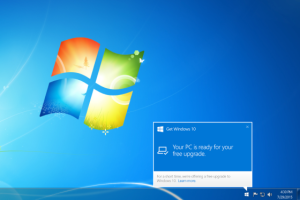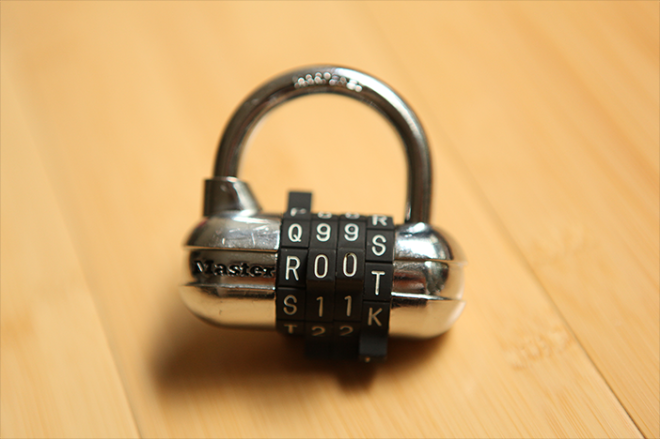If you've been offered it by the Microsoft "Get Windows" application you should very seriously consider getting signing up and letting Windows do the upgrade to the newly released version 10, and here's why.
Take is from someone who's been testing Win 10 since the public beta program started last October. What you're being offered is possibly the best Windows release ever, if not that it's certainly the best Windows for the price. Which is $0.
Think of this upgrade like you do your mobile phone, where you just let upgrades happen as a matter of course. Microsoft want you to do the same with Windows, and here's 10 reasons why I think you should:
 |
| The "Get Windows 10" app, offering you ~$150 worth of software for free. |
Reason #1 - It's Free
Never a good reason in itself, being free is certainly compelling, but sometimes you get what you pay for. But this is one of the rare cases where the thing that's being offered to you at no cost is actually pretty good. I was very surprised to note that many people didn't understand that Windows 10 is free to anyone running legal copies of Windows 7, 8 or 8.1 for 12 months starting from its release in July 2015. After that you'll have to pay for it, so it's worth taking note of the other reasons below to help understand why free Windows is a good thing.
Reason #2 - It's Faster
I loved hearing Gable Aul (Corporate Vice President - Engineering Systems at Microsoft) talk about this when he was speaking on the Windows Weekly podcast, where he said that the development teams working on Windows will sit in meetings and argue about how to reduce a 100ms delay somewhere in Windows. His argument was (to paraphrase) that if they can save even .1 of a second that puts something like a thousand days worth of time back into the world, when you account for the billion or so Windows devices out there. That attitude is obvious in Windows 10, with faster load times and snappier responses in most areas. It's particularly noticeable going from Windows 7 to 10, as 7 was quite slow even compared to Windows 8.
Reason #3 - The Upgrade is Easy
Most people are finding the upgrade process goes smoothly for them, and although in some cases it can take a while, it's amazing that Microsoft are able to run an automated upgrade process from 3 different OSes (Windows 7, 8 and 8.1) to Windows 10 on the myriad of different hardware platforms out there, and maintain a largely consistent experience. Sure, if you're a technical person, or know someone who is, starting fresh with a clean installation is better, but the upgrades I've done have been very straightforward, so why not give it a try? Just open that little Windows icon in the system tray and get going. If you're running Windows 8.x you wont want to go back, that much is for sure.
Reason #4 - Virtual Desktops
Do you know anyone who uses Linux? No? Well of course you don't, you're normal! But if you did they'd tell you that Linux has had this for years. But that's okay, the Commodore Amiga had this in 1985, so they can get off their high-horse anyway. Virtual desktops are like having multiple screens, but on the one screen, it reduces the clutter on your main screen allowing you to easily flip between these screens, or desktops. Imagine having Word and Excel open on one desktop, then pressing Windows Key + ► and the whole screen slides to the right to reveal another desktop where you have your web browser and it's various tabs open. This is a brilliant productivity tool, and the only problem with it is that it's taken so long!
Also, Microsoft have built in a new task switching interface, accessible from the task bar that you can use to easily move applications from one virtual desktop to another. It's very slick and easy to use, certainly much more friendly than any implementation I've seen on Linux.
Reason #5 - The Start Menu is Back
Oh, calm down, it was never that brilliant anyway! That said the Start Screen in Windows 8.x was half-baked, and many (including me at times) found it very annoying. The problem is, that the live tiles on the start screen were an improvement over plain static icons like you'd seen in Windows 7 or MacOS. So Microsoft have reinvented the Start Menu to be a mix between the Start Menu and the Start Screen. Rest assured, you still click in the bottom-left and see all your programs like you used to. The main differences are that the icons are capable of showing extra information, and the start menu can become a start screen if you're using a Windows tablet.
Reason #6 - Edge
You can invoke a visible shudder from people just by saying the words "Internet Explorer" to them. That mangled and sluggish web browser is easily the worst you could use on Windows, and it's the default! What's more it's regularly targeted by malware. A lot of people just use it because it's there, making their web browsing experience horrible, and potentially exposing them to malicious software. The solution was for Microsoft to get rid of it in Windows 10, replacing it with a new browser called Microsoft Edge. Edge still bears some parts in common with Internet Explorer, but they ripped out all the problematic code, basically stripping it bare and starting almost from scratch. It's standards compliant, so that means websites are more likely to display correctly, and it's fast. Sure, it doesn't support extensions yet, they're coming soon. But give me Edge over Internet Explorer any day. Once they've added a bit more polish to Edge, it should be a genuine competitor for Chrome and Firefox, with the former becoming increasingly problematic in recent times.
Reason #7 - Action Center
Notifications, just like on your mobile phone. All contained in the one place to make them manageable and understandable.
When they originally released this feature to the preview program long before Windows 10 was released, it wasn't my favourite feature. It was clunky and unpredictable, what's more I didn't care for the interface design. But sometime before Windows 10 went to the public they redesigned it, and now I do quite like it. As software makers begin to use it more you should see alerts and notifications end up in the Action Center, rather than bugging you so much with popup Windows while you're trying to work, or filling up the system tray with icons.
Reason #8 - Continuum
Continuum is the name for the feature Windows 8 should've had right from the start. But of course, Windows 8 would've needed a Start Menu option for desktops and laptops for that to work, and it didn't.
In a nutshell, Continuum manages the way 2-in-1 devices like the
Microsoft Surface or the
Lenovo Yoga work when you change them from a laptop to a tablet. It expands the start menu to a full-screen touch-friendly experience when in tablet mode, and back to the traditional start menu when in laptop mode. It will also do the same for "modern" apps, like the Mail app. This way, you don't have to try and work in a tablet interface on your laptop, or a desktop interface on your tablet. Having the best of both worlds pushes us closer to that ideal of having one device that does it all.
On a side note, continuum also exists for Windows Phone, where you should be able to drop your phone into a special dock that turns it into a desktop or laptop computer. If it works as advertised (and I ask you, when has anything from Microsoft not?), being able to store your life on your phone as most of us do, and have it work as your computer as well is a very compelling thought. If it works. Which I'm sure it will! ;)
Reason #9 - The Future of Windows is Guided by Us
Part of the problem with Windows 8.x was the top-down approach taken by the team then lead by Steven Sinofsky which implied that they knew what we wanted better than we did. But they didn't, and we let them know. So the new Windows team created the Windows Insider Program and the means to provide feedback during the development of Windows 10, and into the future. Windows 10 is not the product of design-by-committee, or the result of one man's vision that turned out to be an hallucination. It's the result of their ideas, our ideas, and our feedback on those ideas. I'd much prefer this than the old Windows way (which was based on the Apple way). The value of seeking feedback like this is proven by how much better Windows 10 is than Windows 8.
Reason #10 - It's Not Windows 8
Last, but certainly not least, we can move on from Windows 8, the Windows we had to have, but didn't want. It's quite possible that Windows 8 was a necessary step toward a Windows that was relevant in the modern touch-centric world. It was an ugly step in a transition to the much more thoughtful Windows 10 we have today. It's possible that's the case, and it just sucked to have to go through that interim step. Whatever the case, I feel like the free upgrade to Windows 10 is something of an apology to us all for that ugly transitional phase.
Many people have Windows 8 computers out there that aren't up to the job. Without touchscreens and tablet functionality they're a bad experience running Windows 8 or 8.1. So now you can upgrade to Windows 10 and get back the control and features you need to use a traditional computer with a keyboard and mouse. Plus, if you have a tablet or convertible, Continuum gives you that "two sides of the same coin" freedom you didn't have before.
Caveats And Conclusions
There are always exceptions to prove the rule, and one of the biggest is if you own a Mac. If you have a Mac, sure you could run Windows 10 on it, but the best operating system for you is MacOS. Driver support for Windows on your Mac is provided by Apple, and they don't do a very good job of it, and I can't blame them, they make their own perfectly good operating system. So if you run Windows on your Mac, don't expect the best performance, because Apple's drivers aren't up to it, particularly battery performance.
Another point to make here is if you run a computer in a business environment and use software made by a third-party company for your core business functions, be very careful. Always check with the people who make your software to see if it's compatible with a new Windows version before upgrading.
I'm writing this article from one of my three Windows 10 computers, and I'm very happy with all of them. There's a reason why Windows 10 has seen the
best uptake of any Windows yet, and why it's seen
more copies installed in two months than all Macs in existence. It's because it's very good, and one of the exceptional occasions where there is actually such a thing as a free lunch.



